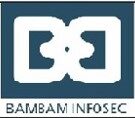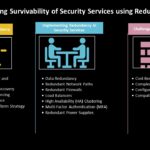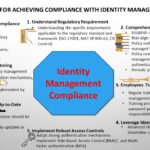
Organizations have budgeted and invested vast amounts of funds in information systems to enhance business operations, facility management decision-making, and competitive advantage. Conversely, there has been a corresponding increase in the impact of information system incidents. To give reasonable assurance that security measures implemented can prevent and mitigate security breaches, an effective and efficient security controls testing process is a crucial success factor. Being aware of this, what are the organizational factors that influence an operational security control testing process?
In performing security control testing, several factors contribute to the overall success of the process by ensuring the testing is thorough, consistent, accurate, reliable and provides meaningful insights into the overall cybersecurity posture of the organization. Let’s delve into the key performance indicators (KPIs) companies can use to evaluate the efficiency and effectiveness of their security control testing processes.
10 critical success factors (CSFs) that influence an effective security control testing process. The CSFs are not in order of priority:
- Adherence to Standards
- Management Support and Commitment
- Resource Allocation
- Competence of Testing Team
- Tools and Technologies
- Documentation and Testing Methodology
- Risk Prioritization
- Independence and Objectivity
- Testing Frequency
- Resolution Time
Adherence to Standards. Security standards and frameworks often specify the security controls and requirements that organizations must implement. Adherence to these standards and regulatory requirements serves as a blueprint for organizations to establish robust security testing practices. It not only guides the selection of security testing methodologies but also ensures that testing efforts are aligned with the relevant security and compliance needs of the organization and its industry best practices. For example, PCI DSS requires regular vulnerability assessments and penetration testing to identify security weaknesses in cardholder data environments.
Management Support and Commitment. Executive management support and commitment provide the foundation for an effective security testing process by ensuring adequate resources, setting priorities, shaping organizational and security awareness culture, facilitating compliance, promoting collaboration, investing in staff development, establishing a feedback loop, and fostering continuous improvement. Without strong leadership buy-in, security testing efforts may lack direction, consistency, and effectiveness, leaving the organization vulnerable to security breaches and incidents.
Resource Allocation. Resource allocation influences the depth, frequency, and overall effectiveness of security testing. Resources for security testing activities include budget, tools, and personnel. The budget allocated to security testing determines the scope of testing, the selection and acquisition of appropriate security testing tools and technologies, the hiring of skilled professionals, and acquiring necessary resources.
Insufficient budget allocation may lead to compromised testing efforts, incomplete coverage, or reliance on subpar tools and resources. Also, a lack of skilled personnel can lead to inadequate testing coverage and ineffective identification of security weaknesses. Organizations must allocate the necessary resources to ensure that their security testing processes are robust, up-to-date, and capable of identifying and mitigating potential security risks.
Competence of Testing Team. The competence of the testing team is fundamental to the success of security testing efforts. A skilled and knowledgeable team can conduct more thorough, accurate, and effective security assessments, helping organizations identify and mitigate potential security risks before they can be exploited by malicious actors. Ensure that the testing team comprises skilled and experienced professionals with expertise in relevant security domains. In situations where knowledge gaps have been identified, the team can be trained to develop skills in understanding security principles, development of test strategies, identification of security weaknesses and team collaboration.
Tools and Technologies. The right combination of security tools and technologies significantly influences the effectiveness of security testing processes by automating tasks, expanding coverage, improving accuracy, enabling scalability, facilitating integration, supporting real-time monitoring, providing comprehensive reporting, and leveraging threat intelligence. Investing in state-of-the-art tools and technologies enhances the efficiency and accuracy of testing processes. By leveraging these capabilities, organizations can ensure that potential security risks are identified across all aspects of an organization’s infrastructure, including web applications, databases, and network devices and enhance their security posture.
Documentation and Testing Methodology. Documentation and testing methodology are integral components of an effective security testing process as they provide structure, clear guidelines, consistency, repeatability, compliance, knowledge transfer, and opportunities for continuous improvement. Well-documented test reports, along with documented methodologies, provide evidence of due diligence in addressing security concerns. Clear documentation also facilitates communication with stakeholders, including management, auditors, and regulatory bodies, by providing transparent insights into the security posture of the organization. Organizations should tailor their test methodology to a specific control being assessed to provide meaningful results.
Risk Prioritization. When risk prioritization is applied to security testing, it ensures organizations focus their efforts directly on the areas of greatest concern, optimizing resource utilization, and helping organizations proactively manage and mitigate potential security risks. Risk prioritization guides the planning of security tests by determining which areas of the organization’s infrastructure, such as sensitive data, and key systems, or which types of tests should be prioritized. By understanding which assets have high potential impacts on the organization, priority can be placed on assessing the security controls surrounding these assets.
Independence and Objectivity. Maintaining independence and objectivity throughout the testing process helps ensure unbiased assessment and trustworthy results. Independent testers are more likely to conduct a thorough evaluation of the security controls and practices. They are not influenced by internal politics, relationships, or preconceived notions about the organization’s security posture. This allows them to identify vulnerabilities and weaknesses that might otherwise be overlooked or downplayed. Overall, there is a huge buy-in and confidence by stakeholders, including clients, regulatory bodies, and internal management, in the outcome of the control testing process.
Testing Frequency. In rapidly evolving environments where new threats emerge frequently, regular testing ensures that vulnerabilities are discovered before they can be exploited by malicious actors. To support this goal, many regulatory frameworks and standards mandate regular security testing. Apart from prompt detection and mitigation of security issues, frequent control testing ensures adaptation to change, driving continuous improvement, building resilience, and promoting cost-efficiency.
While frequent testing may incur more costs, it can ultimately be more cost-effective than dealing with the aftermath of a security breach. Investing in regular security testing helps organizations identify and address vulnerabilities early, minimizing the potential financial and reputational damage associated with security incidents.
Resolution Time. Talking about resolution time, it refers to the ability of the organization to promptly address vulnerabilities or issues discovered during testing. A quick or shorter resolution time provides a faster feedback loop for security testing processes. Also, it shows a commitment to security and can help maintain trust with customers, partners, and other stakeholders. Conversely, delays in addressing security issues can damage reputation and erode trust in an organization’s ability to protect sensitive data and systems. Thus, minimizing resolution time is essential for a robust and initiative-taking approach to cybersecurity.
By considering, prioritizing, and incorporating these critical success factors, organizations can enhance the reliability and effectiveness of their control testing processes. This in turn contributes to and strengthens the overall risk management process, governance framework and security posture.







Thanks for sharing. I read many of your blog posts, cool, your blog is very good.
Thank you for your sharing. I am worried that I lack creative ideas. It is your article that makes me full of hope. Thank you. But, I have a question, can you help me?
Your point of view caught my eye and was very interesting. Thanks. I have a question for you.
Your point of view caught my eye and was very interesting. Thanks. I have a question for you.